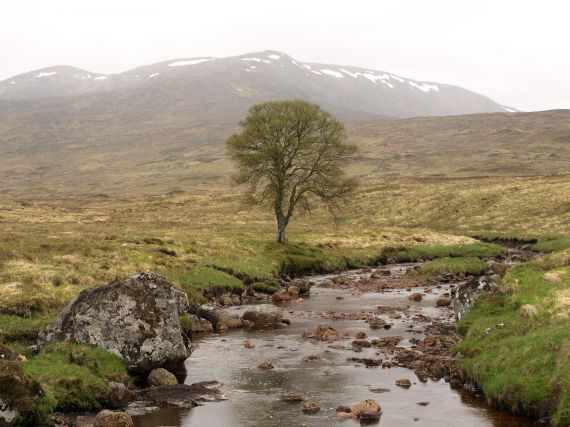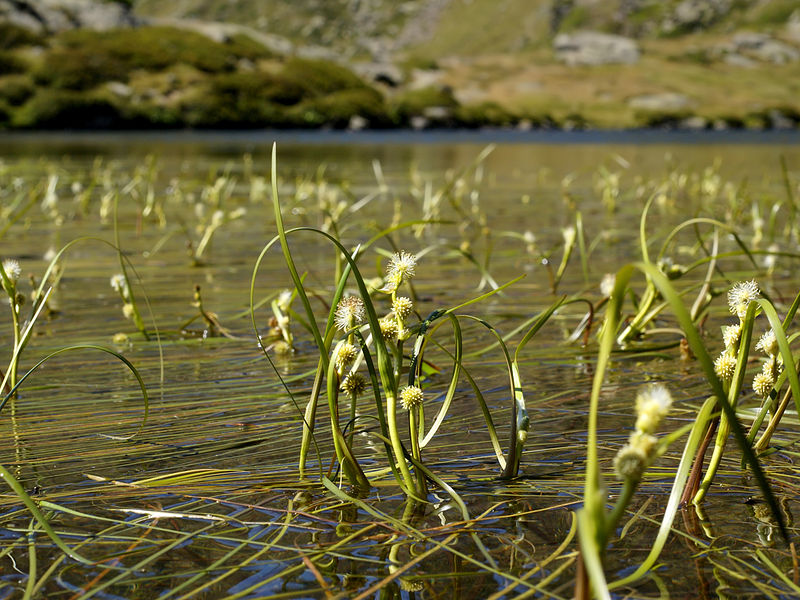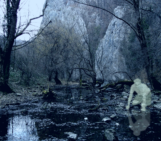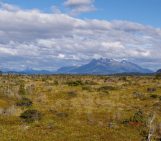Rannoch Moor is the largest area of unbroken (no houses, no roads) blanket bog in the United Kingdom. Blanket bogs – as their name suggests – blanket the ground in an extensive layer of peat. They form in regions where there is high rainfall and comparatively little evapotranspiration. These waterlogged conditions are found throughout much of the northern hemisphere, and allow blanket bogs to form from Russia to North America. Despite this, though, it is one of the rarest habitats worldwide.

“Rannoch Moor” by Marcel van Oijen, distributed by the EGU under a Creative Commons licence.
This is because there are a number of other constraints on peatland formation. Peatland only develops when the ground below is relatively impermeable. That’s certainly the case for Rannoch Moor, where the bedrock is mostly Devonian granite.
Many peatlands are protected under the EU Habitats Directive as they support a huge variety of plants, birds and insects and the peaty habitats here have been designated as a Special Area of Conservation. Rannoch Moor supports a number of nutrient-poor freshwater habitats and while many of these have relatively low biodiversity, several of the plants that thrive here, including floating bur-reed and the Rannoch-rush, are relatively uncommon, hence its conservation status.

Floating bur-reed, Sparganium angustifolium, is one of the many uncommon species found in the mineral-poor waters of Rannoch Moor. (Credit: Hans Hillewaert)
References:
Joint Nature Conservation Committee (JNCC) website, accessed August 2013
Natural England website, accessed August 2013
Imaggeo is the EGU’s online open access geosciences image repository. All geoscientists (and others) can submit their images to this repository and since it is open access, these photos can be used by scientists for their presentations or publications as well as by the press and public for educational purposes and otherwise. If you submit your images to Imaggeo, you retain full rights of use, since they are licensed and distributed by the EGU under a Creative Commons licence.


